Horse riding in the Calchaquí Valley
By: Virginia Imberti Posted: 27/11/2020
Ampascachi only offers horse riding holidays in Argentina.
Horse culture is part of Argentina’s traditions.
Exploring this country on horseback is an unforgettable experience.
If you are reading this article, we know that you like to ride a good horse in a natural environment, and you also like to see the people and the culture of the places you visit on horseback.
Are you in doubt as to where to spend your next horse riding vacations?
Enjoy a horse riding holiday in Argentina, in the province of Salta, visiting the villages of the Calchaquí Valley and their natural treasures, such as the Amphitheatre and the Devil's Throat near Cafayate.
Discover the Calchaquí Valley on horseback
If you want to enjoy horses and nature on your next holidays – something that you may have already done on other occasions and, if you haven’t, all the more reason – I’d like to recommend just two things:
Riding a Peruvian horse and exploring the entire Calchaquí Valley, in the province of Salta, Argentina.
What does this riding trail include?
Arrival in the city of Salta, a city tour and a car ride along the wonderful Cuesta del Obispo (Bishop’s Slope) to reach Cachi, where our horseback tour will start. From there, we will ride up to San Carlos, exploring several small villages along the way – something you will never forget.
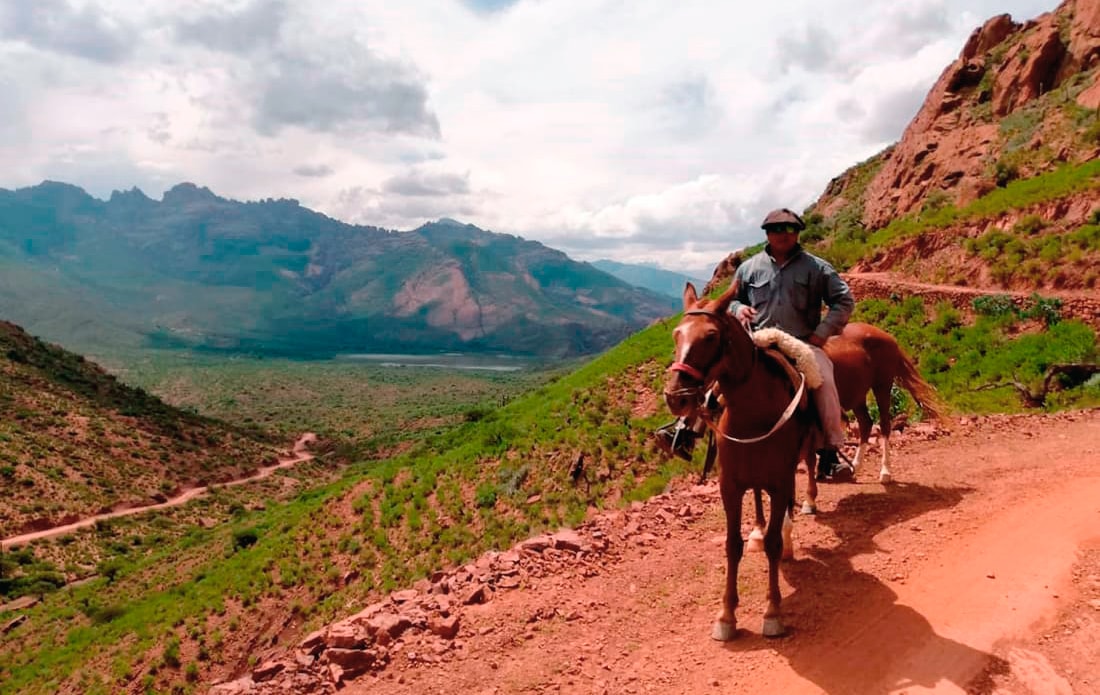
What’s the Calchaquí Valley like?
The Calchaquí Valley is a region in northern Argentina, characterized by its many-coloured hills, where rural and urban traditions still coexist.
The name "Calchaquí" was given in honour of the indigenous people of the same name, who once inhabited these lands. This valley stretches along 520 km. Its impressive and captivating landscapes feature big red rock mountains and a large number of vineyards.
The Calchaquí Valley encompasses many smaller valleys and rivers, as well as several villages, rich in traditional culture and folklore.
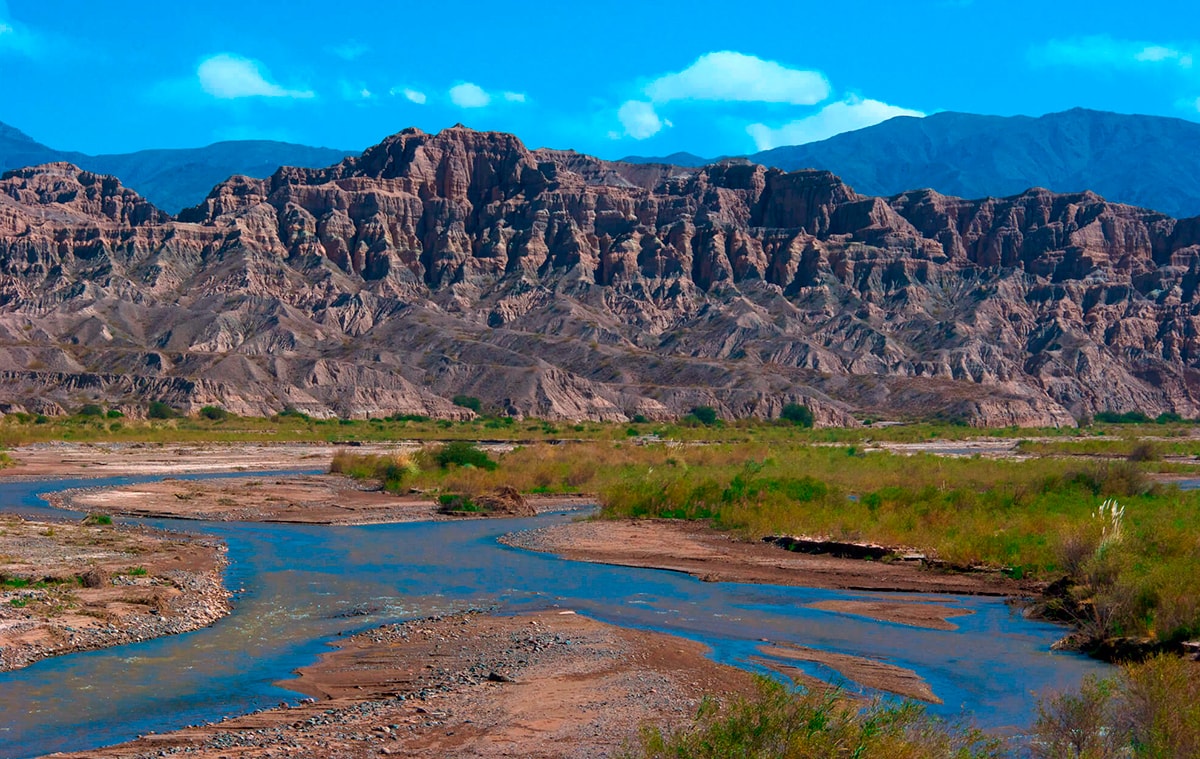
The villages of the Calchaquí Valley
Some of the region’s most outstanding villages are Cafayate, Animana, San Carlos, Angastaco, Molinos, Seclantas and Cachi. However, in this vast expanse, you can also find many archaeological and historical sites from the colonial period and the independence revolution.
Horseback riding in the Calchaquí Valley is a great way to explore the region, appreciate its stunning landscapes and learn about local rural life.
Would you like to be part of a group with an equestrian soul?
Join the Ampascachi Community. Obtain exclusive benefits for your holidays.
We tell you how to start, train and take care of your horse.
Interviews with direct providers of riding tours around the world.
Opinions of outstanding equine scientists and personalities in the equestrian sport world.
Salta, the starting point of your tour
Esta experiencia comienza con tu llegada a la ciudad de Salta.
After checking in at the hotel, we will visit the city centre, the different museums and the historic Cabildo.
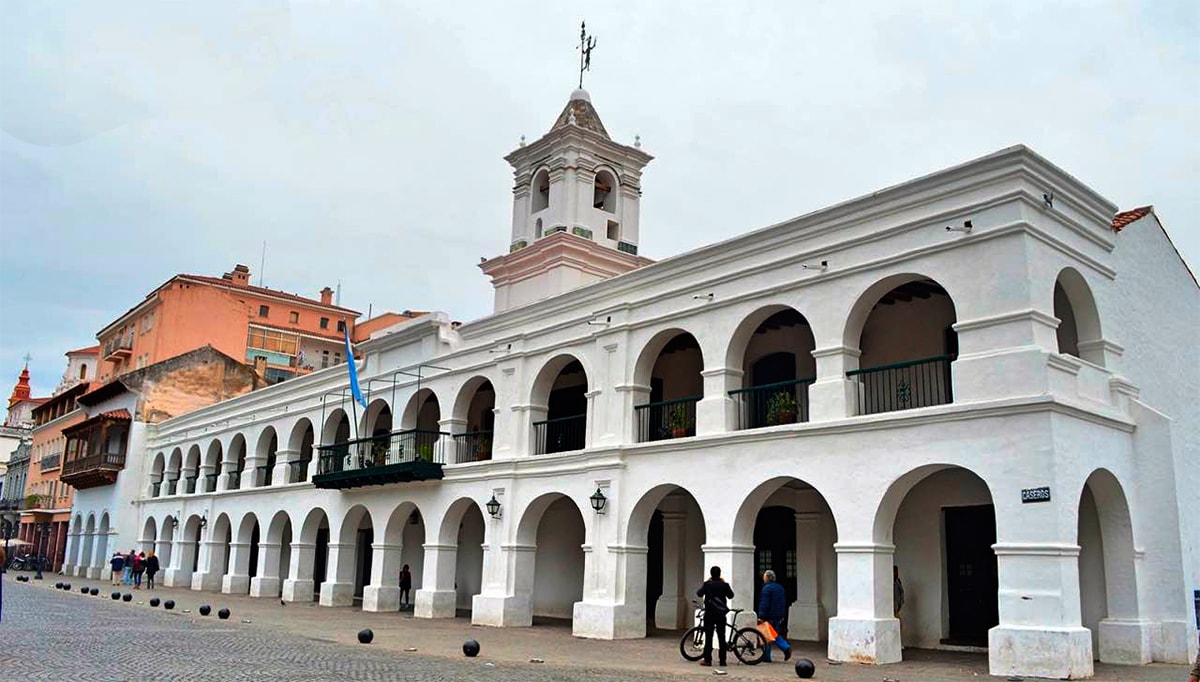
The Cabildo of Salta
In the afternoon, you can get some rest before dinner at a folkloric “peña” (live music venue), where you can try our typical dishes and if you dare, you can sing or dance with the locals.
What you need to know about the city of Salta
What you need to know about the city of Salta With a population of 533,303 according to the 2010 census, it is the most populous city in the province, the second most populous in northern Argentina, and the seventh most populous city in the country. It is also an important cultural and tourist hub.
It is located east of the Andes mountain range, in the Lerma Valley at 1,187 metres above sea level, very close to the source of the Salado River — a major river that drains into the Paraná River. The Arenales River flows through Salta and splits the city in two parts, north and south.
The city has several museums and art galleries, including:
- The Historical Museum of the North tells the city's history.
- The Uriburu Museum, which was the residence of José Evaristo Uriburu and today it’s a perfect example of a typical colonial house.
- The Museum of High Altitude Archaeology (referred to by its Spanish acronym MAAM) exhibits the famous child sacrifices and objects of an Inca burial ground discovered at the peak of Llullaillaco, a nearby volcano.
- The Anthropology Museum showcases a fascinating number of pre-Columbian artefacts found in the archaeological site of Tastil.
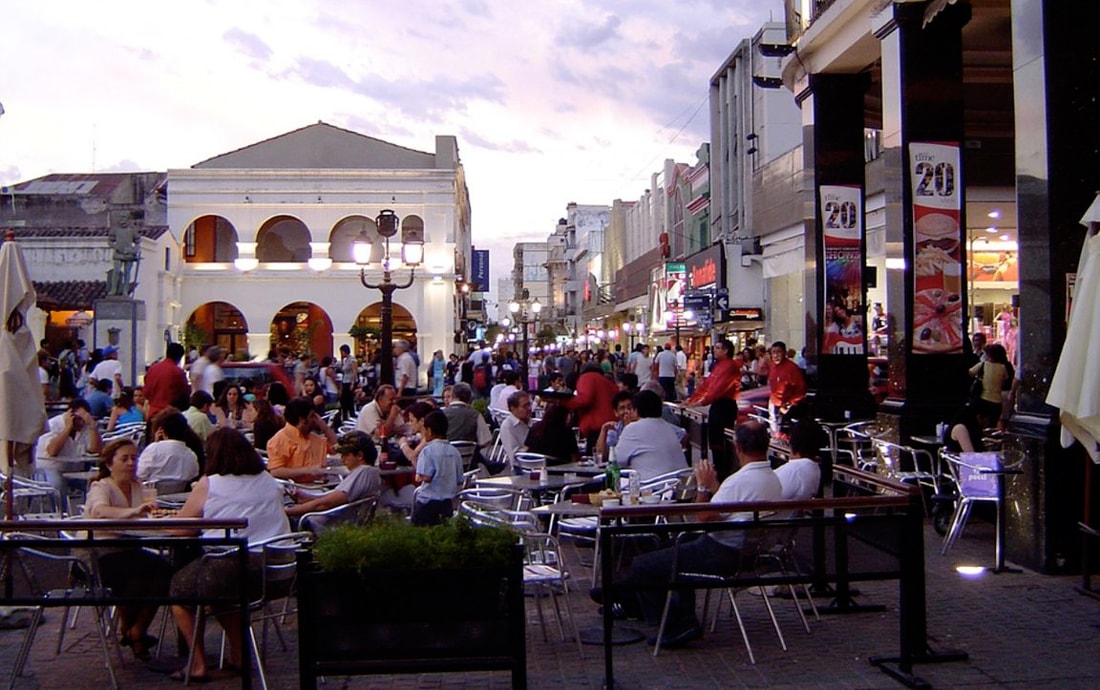
Salta city centre
The city is famous for its tamales and humitas, two dishes made of ground corn, and for the delicious Torrontés, a white wine produced in Cafayate, in the province of Salta.

Humitas
After seeing the colonial gems of the city of Salta, you’ll head for the Casa de la Tradición (House of Tradition) in the town of Chicoana, where you can decide which of our Peruvian Paso horses is the most suitable for you. With the horse of your choice, you will set off on this epic journey across the Calchaquí Valley.
Then, let’s explore the charming and interesting village of Cachi. To get there, we’ll travel by car along the scenic Cuesta del Obispo (Bishop’s Slope), which is an unparalleled natural wonder. Weather permitting, you will able to appreciate all its magnitude.
Around the cobbled streets of Cachi
Cachi is surrounded by snow-capped peaks and cardon cacti at 3,000 meters above sea level. This very special village mixes rich archaeological remains, which are testimony to its ancient civilizations, together with incredible natural landscapes.
The old church, the perfectly preserved houses and the narrow cobbled streets create a magical atmosphere in this quaint Calchaquí village.


Having discovered the secrets and stories of this lovely little town, we will go to Seclantás on horseback.
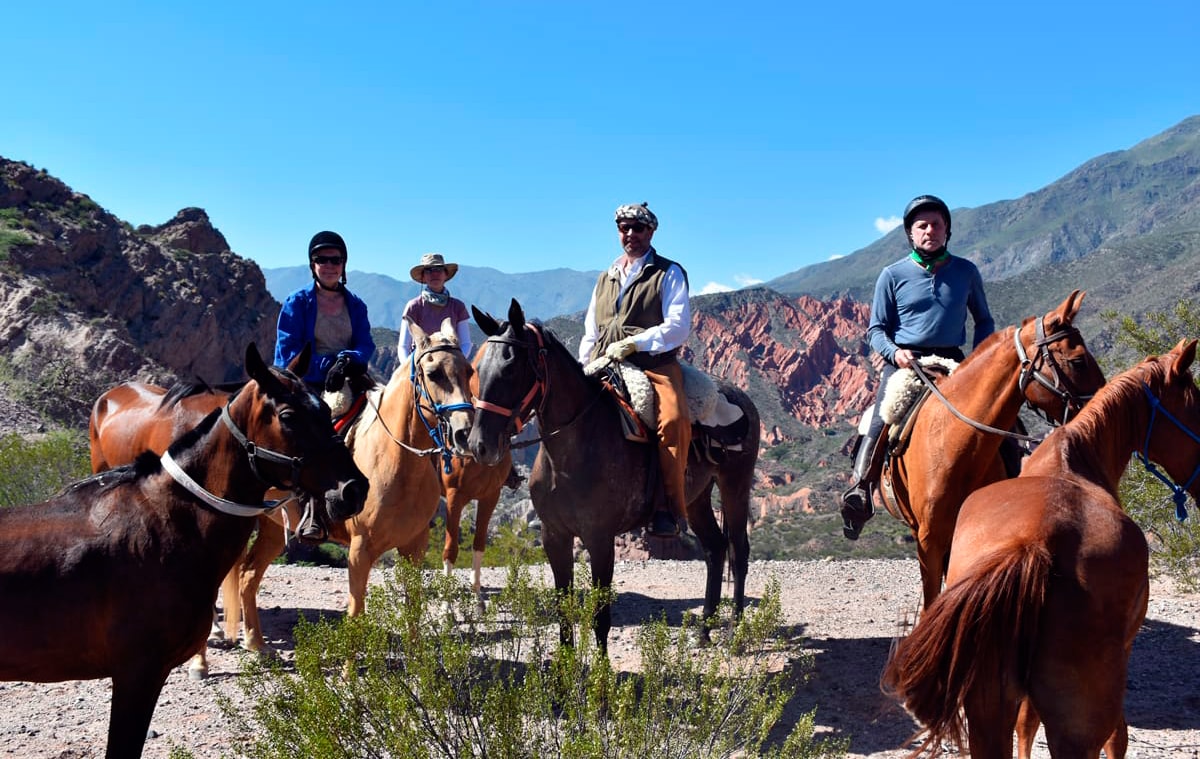
Before arriving in Seclantás, we will make a short stop-over at the Camino de los Artesanos (Artisans’ Route). At this captivating market, you can see how artisan weavers work with their looms. Local families from rural areas devote their time to making handcrafted ponchos.


After visiting the market, we will ride our horses to Seclantás and stay at the Montenieva family’s country house. They'll be more than happy to be our hosts.
Seclantás, the cradle of the poncho in Salta
Seclantás is a village in the centre of the Calchaquí Valleys and close to other villages that we will visit later. In this historic place, a part of the Argentine independence movement took shape and, at the same time, there are Inca ruins bearing testament to the ancient inhabitants of these lands.
This town is home to artisan weavers and the “poncho salteño” (a red and black poncho typical of Salta). It is believed that the name of this small village comes from the old name of the present-day Brealito River, which was formerly known as "Seclanta Creek".

Seclantás is one of the many ancient villages that are located on the banks of the Calchaquí River, a few meters from National Route 40.
In 1814, these Calchaqui lands were the meeting point of the patriotic men who helped Belgrano in the independence movement against Spanish rule.
Seclantás is strategically located in the middle of other towns and places of great historical and tourist interest. Today, people’s life practically revolves around a main street. Houses with cool porches and impeccable facades, whose ceilings are made of reeds and mud cakes.
At 2,100 meters above sea level, the climate here is dry and arid, with sunny days and very cold winters.


Seclantás
As our equestrian route continues, we will come across a very important lake of northern Argentina: Laguna de Brealito.

Once we resume the equestrian route, we'll head for Molinos...
Around Molinos
This town, founded in the mid-seventeenth century, is a place of high historical value and breath-taking beauty. In 1775, the son of Domingo de Isasmendi, Nicolás Severo, inherited the hacienda which became considerably prosperous.
Isasmendi was the last realist governor of Salta. Today, the chapel and the hacienda house are still preserved.
Opposite the hacienda, which today is a hotel - "Hacienda de Molinos" - we can see the church of Molinos, where Don Nicolás Severo de Isasmendi was buried. He ordered the church to be built in the late eighteenth century.
Like other typical towns of the Calchaquí Valley, Molinos is a quiet place of narrow streets lined with adobe houses. These old buildings still boast their large windows with bars and chamfered corners.
Subscribe to the Ampascachi Community and obtain benefits and exclusive content. Furthermore, we offer free advice on horses and equestrian tourism.
Towards Finca El Carmen
After our horseback ride around Molinos, we will head for a ranch called “Finca del Carmen”, very close to the village of Angastaco.

Angastaco and Quebrada de las Flechas
After that, our equestrian route will take us to the small town of Angastaco, where we will stop over to see the square and the church, and then, into the heart of the Quebrada de las Flechas (Arrows’ Ravine), where we will let ourselves be carried away by the scenic views.

The Quebrada de las Flechas
Angastaco is nestled in a valley, surrounded by mountains and crossed by the river of the same name, which flows from Pucará and empties into the Calchaquí River.
There’s something about this place that will surely catch your attention – the contrast between the intense green shades of the crops and the sandy soil of the valleys. Since the mid-18th century, the indigenous groups that settled in the town of Angastaco depended on the Franciscan Mission of the Rosary of Calchaquí, located in the hamlet of San Isidro, near Cafayate.

The church of Angastaco, Province of Salta
We'll get to the village of San Carlos on horseback. There, we will say goodbye to our fellow travellers, the horses, and continue to Cafayate by car.
What to see in Cafayate?
In Cafayate, we will visit the Piattelli Winery and taste some delicious Torrontés wine.
Piattelli Vineyards
After a wine tasting, we will visit some impressive geological formations: the "Amphitheatre", the "Devil’s Throat" and the "Toad Rock", among others, in the "Quebrada de las Conchas" (the Conchas River ravine).
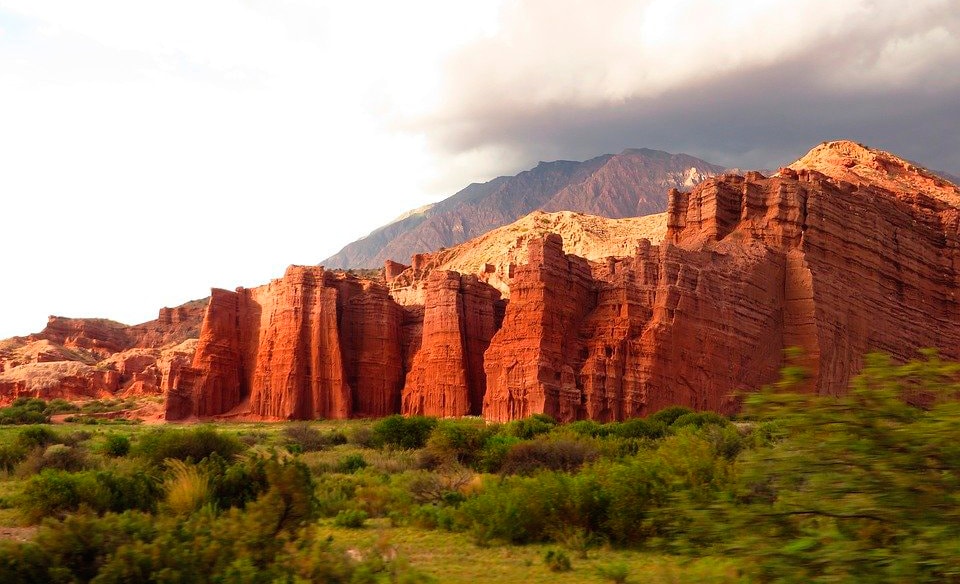
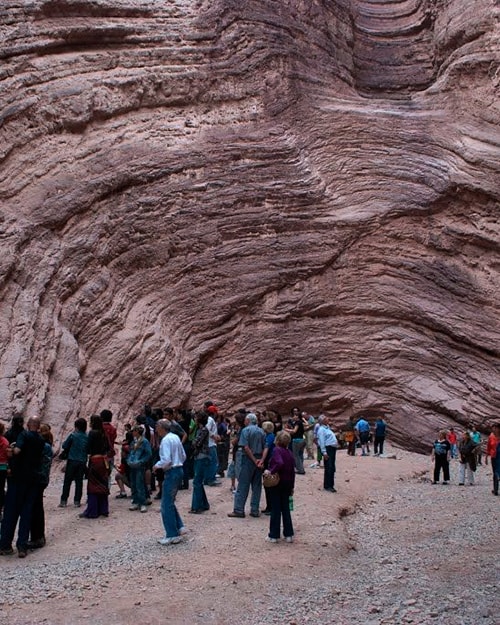
The Amphitheatre

The Devil’s Throat
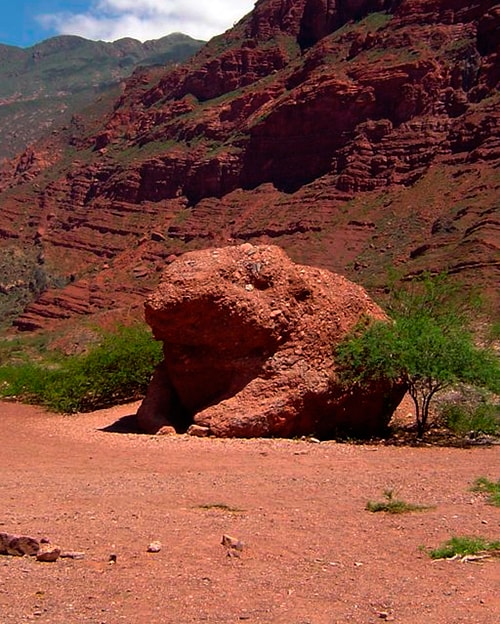
The Toad Rock
In a few days, we will ride around the same places that once witnessed many historical events that took place during the colonial period. This horse riding journey enables you to visit unspoiled places and stay in old country estates and inns where time seems to have stopped and gaucho traditions remain intact. These natural wonders are unique in the world and you will be really surprised at their magnificence.
The importance of this horse riding tour
Thanks to this horse riding tour, travellers can realize the dimension of the dramatic beauty of the Calchaquí Valley, of its peoples and its ancestral traditions. The remotest corners of each village in northern Argentina can only be reached on horseback.
In addition to the pleasure of riding with the comfort and spirit of a Peruvian horse, this equestrian experience will be enriched with many historical and cultural aspects.
At the same time, it is possible to see that traditions in northern Argentina are still alive, and a few examples of that may be the folkloric peñas, the typical foods and folk music, which is still very popular.
To a spirit that is passionate about horses and nature, like yours,
the entire Calchaquí Valley on horseback,
will be as special as it is to us.
Do you like Argentina as your next horse riding holiday destination?
We encourage you to download the catalog of our horseback riding tours in Northern, Central and Western Argentina. Discover Argentina on the back of a Peruvian horse and with our team of equestrian tourism experts.
~
THIS COULD ALSO BE INTERESTING

Horse riding in the Province of Córdoba, Argentina
Haras Ampascachi, home to our Peruvian horse breeding and training centre, offers horseback riding holidays in harmony with nature in the Traslasierra Valley.
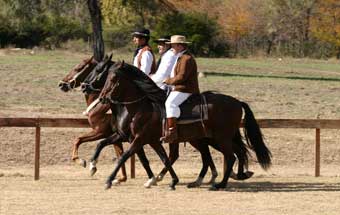
Gaited Horses: Horses with a "Special Gait"
The basic gaits of most horse breeds are the walk, the trot and the canter or gallop. But other breeds have a special ambling gait which is more comfortable to ride than the trot.
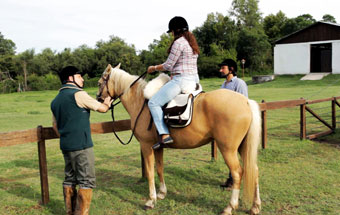
Horse riding safety tips
Tips from Ampascachi’s experts to be safe on the saddle seat. Wear a helmet, make good use of the stirrups and learn good skills to handle your horse.
~
WHAT IS YOUR OPINION? LEAVE A COMMENT
Planning your horse riding holidays?
Join the Ampascachi Community. You will get exclusive advantages and guidance for your next horse riding holiday.


 German
German French
French Spanish
Spanish